The region with the most options to spend a varied vacation between city, beach, islands, desert and mountains is the north of the country with the capital Muscat, the Hadjar Mountains, the Daymaniyat Islands and the desert Wahiba Sands, also called A’Sharqiyah Sands. No matter if you want to hike or climb the up to more than 3000m high mountains or experience some of the numerous wadis, you will collect endless impressions. Some can be experienced by car, often off- road, other places can only be reached with an experienced guide who knows the risky places to abseil and swim through and has the necessary equipment.
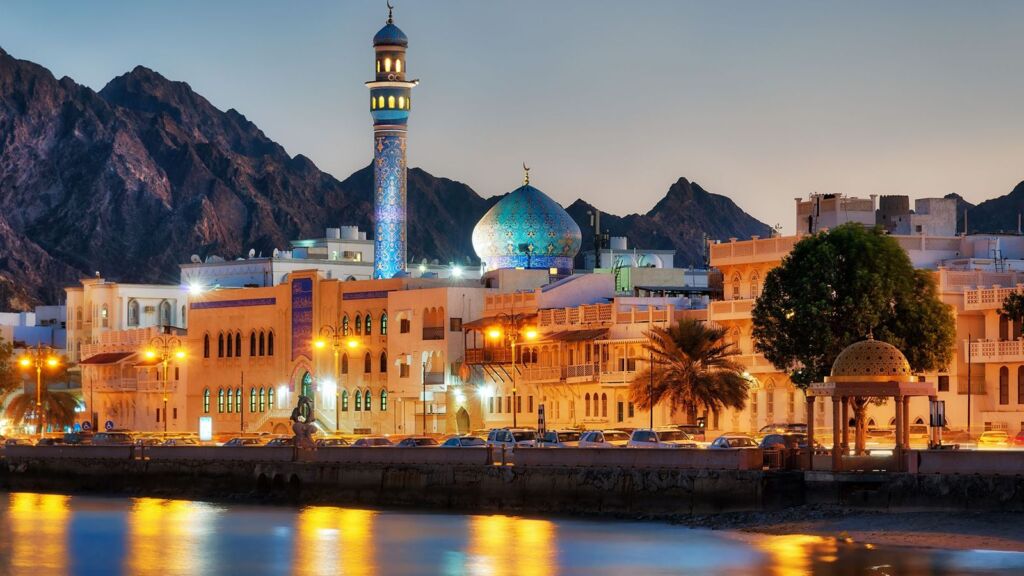
For the not so adventurous, the region offers many places and picturesque villages throughout the year, buildings that immerse you in history. There are also a lot of very authentic markets, which here have not yet mutated into tourist attractions, but are used quite authentically by the population for trade. Or you can experience the rose harvest and rose water distillation at the right time. There are countless possibilities to indulge your hobbies – diving, hiking, kayaking, canyoning, golfing, sailing, horseback riding, ….. or just relaxing? Lonely beaches, mountain terraces or dunes? What do you have in mind? All categories of accommodation from pure luxury with helicopter service to camping equipment are available.
Muscat
Muscat is the capital of Oman and has a rich history dating back to ancient times.There are many sights in Muscat that you should not miss: The Great Sultan Qabus Mosque is the main mosque in Oman. It is considered one of the most important structures in the country and one of the largest mosques in the world. It was inaugurated in 2001 and has been inspiring people of all religions ever since. The mosque can be visited by non-Muslims from Saturday to Thursday from 8 to 11 am each day. Admission is free, but some rules should be observed: Women must cover their hair with a headscarf, men are
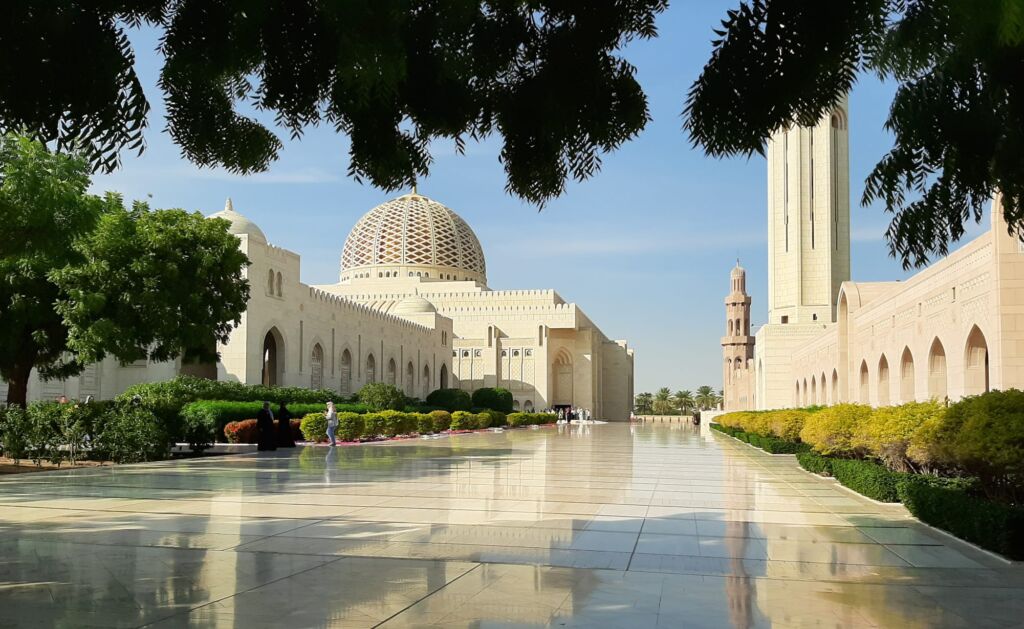
expected to wear long pants as well as a shirt with at least short sleeves, and children under the age of 10 are barred from visiting in this otherwise child-friendly country – at least that’s what the signs say; in practice, this ban seems to be handled loosely. Eating and drinking is prohibited on the premises; so is smoking. Before entering the large men’s prayer hall, shoes must be removed, which can be stored in the shoe racks provided in front of the entrance to the prayer hall.
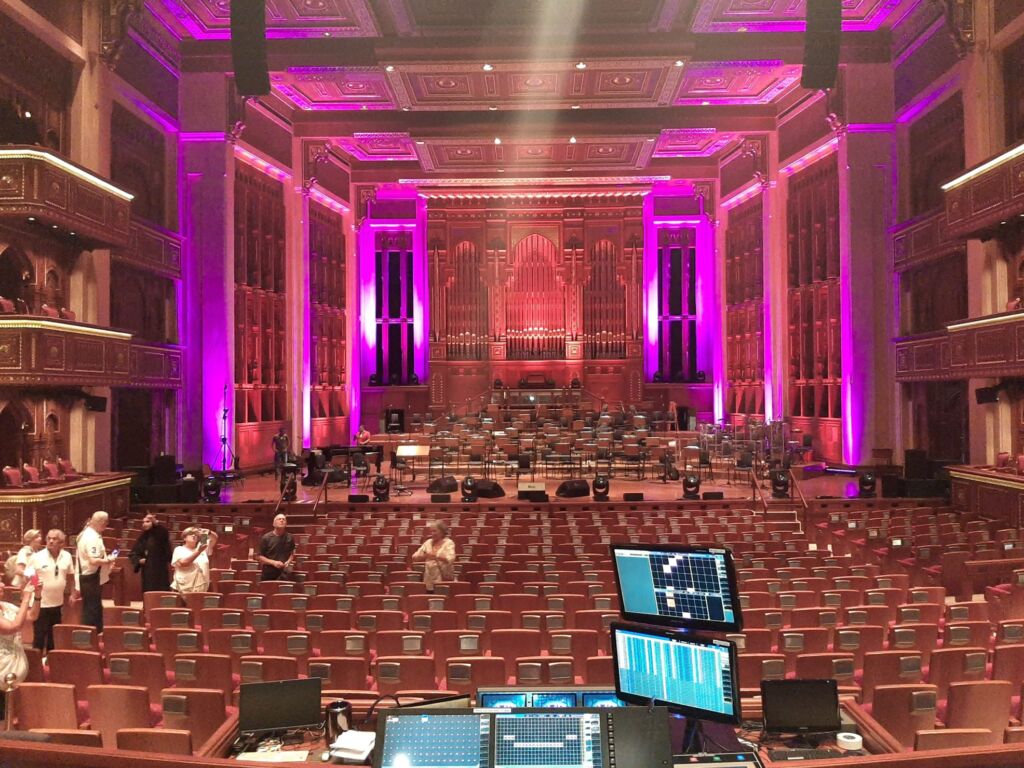
The Royal Opera House Muscat was a gift from the late Sultan Qabus to his people. As the Sultan was very interested in culture he also wanted his people to learn about music aswell. It was opened in October 2011 and since then offers a varied program during the season, which lasts from September to May. The Opera House can be visited all around the year on a guided tour from 8:20am to 5:30pm Saturday through Thursday.
The Al-Alam Palace is a royal palace in Muscat. It was built in the early 1970s by an Indian construction company on behalf of Sultan Qaboos and is now used exclusively for representative purposes, such as receiving state guests. Unfortunately, it can only be viewed from the outside. Don’t forget to take a look at the sea side of the castle and its extensive complex from the back as well. From there you have a wonderful view of Al Mirani and Al Jalali Fort , two forts built by the Portuguese in the 16th century to protect the coastline
and the harbour.
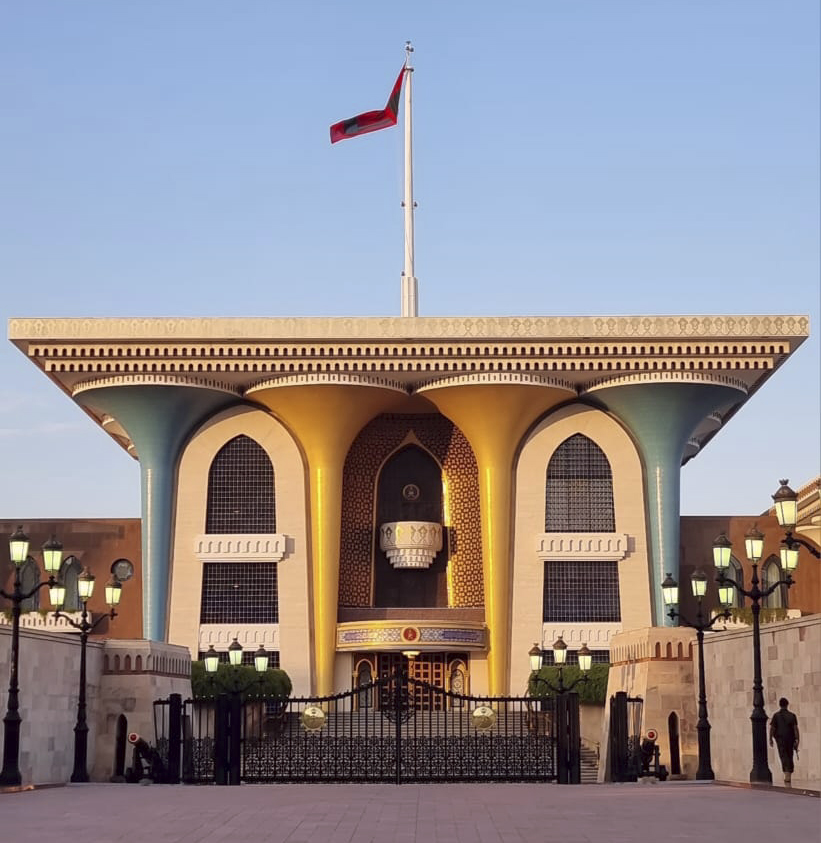
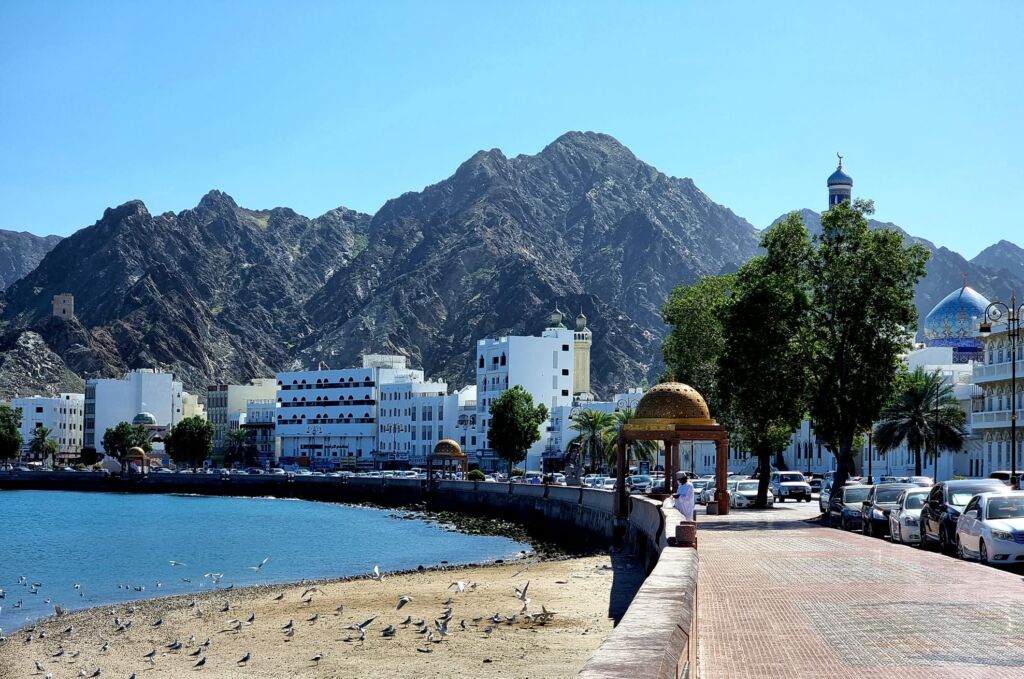
Muttrah Souk open’s Friday to Thursday 9am till 1pm and 4pm till 9 pm, Friday mornings mostly closed.
Nearby is also the fish market. The modernly designed building not only impresses during daytime, but also in the evening with its illumination. Here you can observe the fishermen bring their catch ashore in the mornings. Still 90% of the Omani fishery is done by small boats, although fishing is an important branch of the country’s economy.
The Daymaniyat Islands are about 30 minutes by boat off the coast of Barka, 45 minutes from Al Mouj. These are 9 islands that can also be walked on from November to April to enjoy the beach or to camp there. Access is strictly prohibited from May to October. The Daymaniyat Islands are a nature reserve with strict access rules. To ensure that these rules are observed, there is a checkpoint on one of the islands that takes its job very seriously. Only registered boat companies have access to the islands. For snorkelers and divers there are many different places with different inhabitants. In some places you will encounter large groups of turtles, in other places you will encounter large reticulated moray eels and leopard sharks. In summer, sometimes even in spring, the whale sharks come here to eat their fill in the plankton-rich water. Another interesting island for divers and snorkelers is Fahal Island, just off the coast of Muscat, where you can find blacktip sharks, among other species.
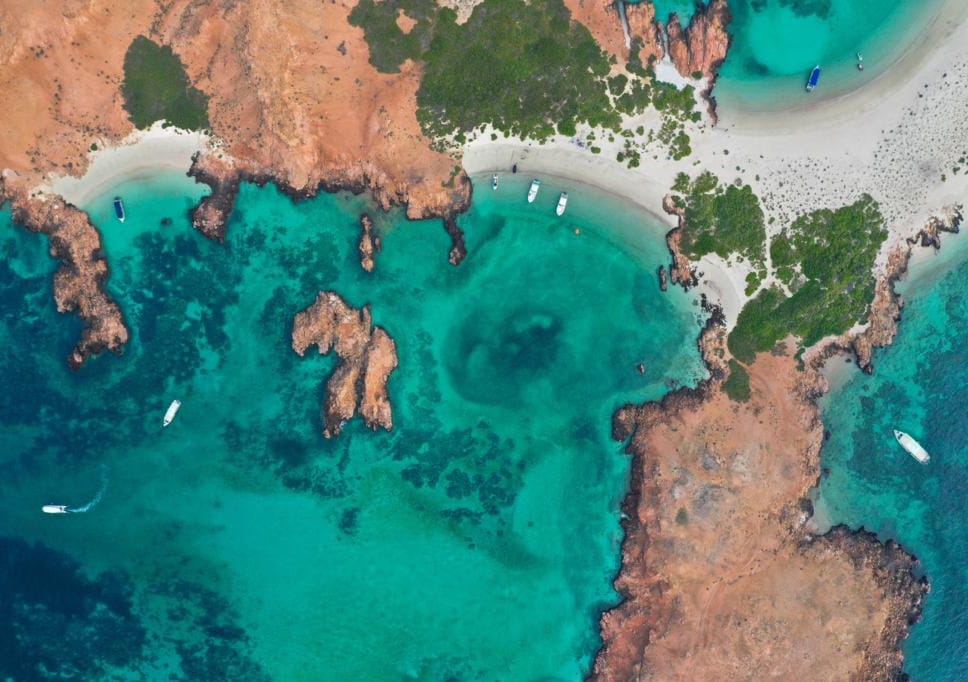
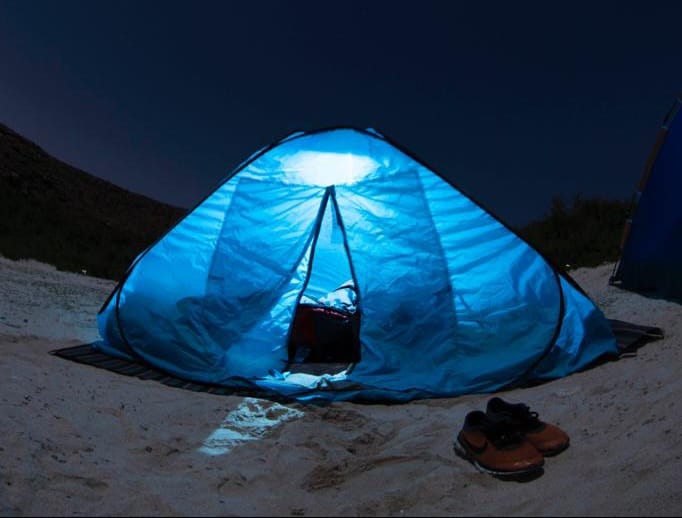
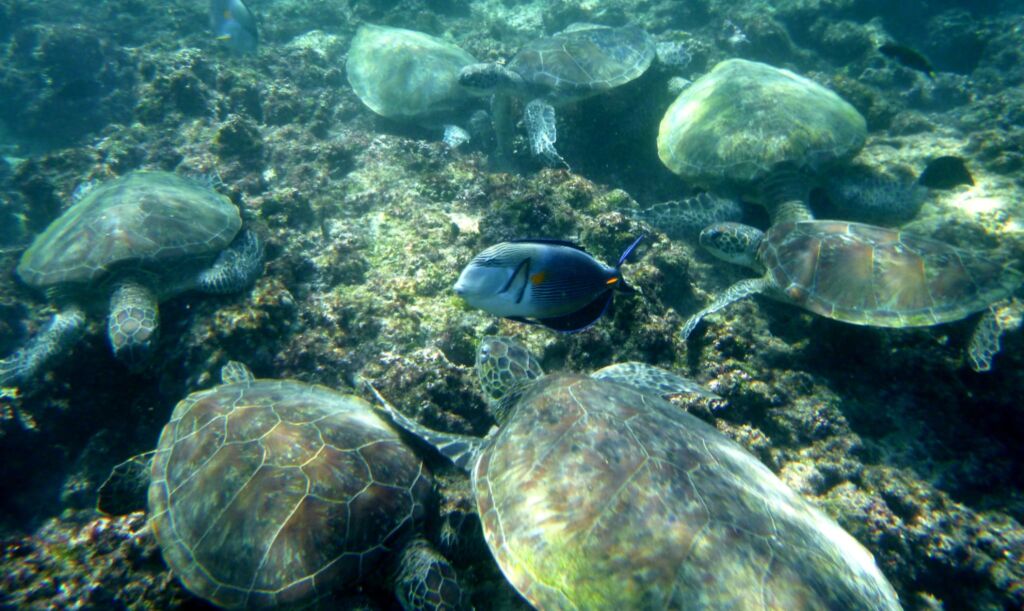
Restaurants in Muscat:
- Fauchon, French-Italian
- Crowne Plaza Qrum, esp. Seafood Night on Thursday and Friday night
- Tokyo Taro Restaurant in Al Falaj Hotel, Japanese
- Bait Al Luban, traditional Omani food
- Rozna, traditional Omani food
- Ramssa Restaurant, Arabic, middle eastern
Hotels in Muscat:
- Crowne Plaza Qrum 🌟🌟🌟🌟
- Ramada Encore 🌟🌟🌟🌟
- Al Falaj Hotel 🌟🌟🌟🌟
Al Batinah
Al Batinah stretches along the coast of the Gulf of Oman, north of Muscat almost to the border with the UAE, about 270 km. On the land side runs the Hajar Mountains. It is one of the most fertile and green regions of the country. with many date and banana plantations. Here are the towns of Barka with its fort and Bait Na’amaan, Nakhal with its fort (currently closed for renovation) and the hot springs Ayyn Al Thawarah and Rustaq, which also has a fort and Al Hazm Castle. Here it is also worth visiting the small souq and the cattle market, which takes place every Friday morning. In the coastal town of Sohar there is the Sohar Fort Museum with an interesting exhibition of the history of Sohar, which has the reputation of having been Sinbad’s home.




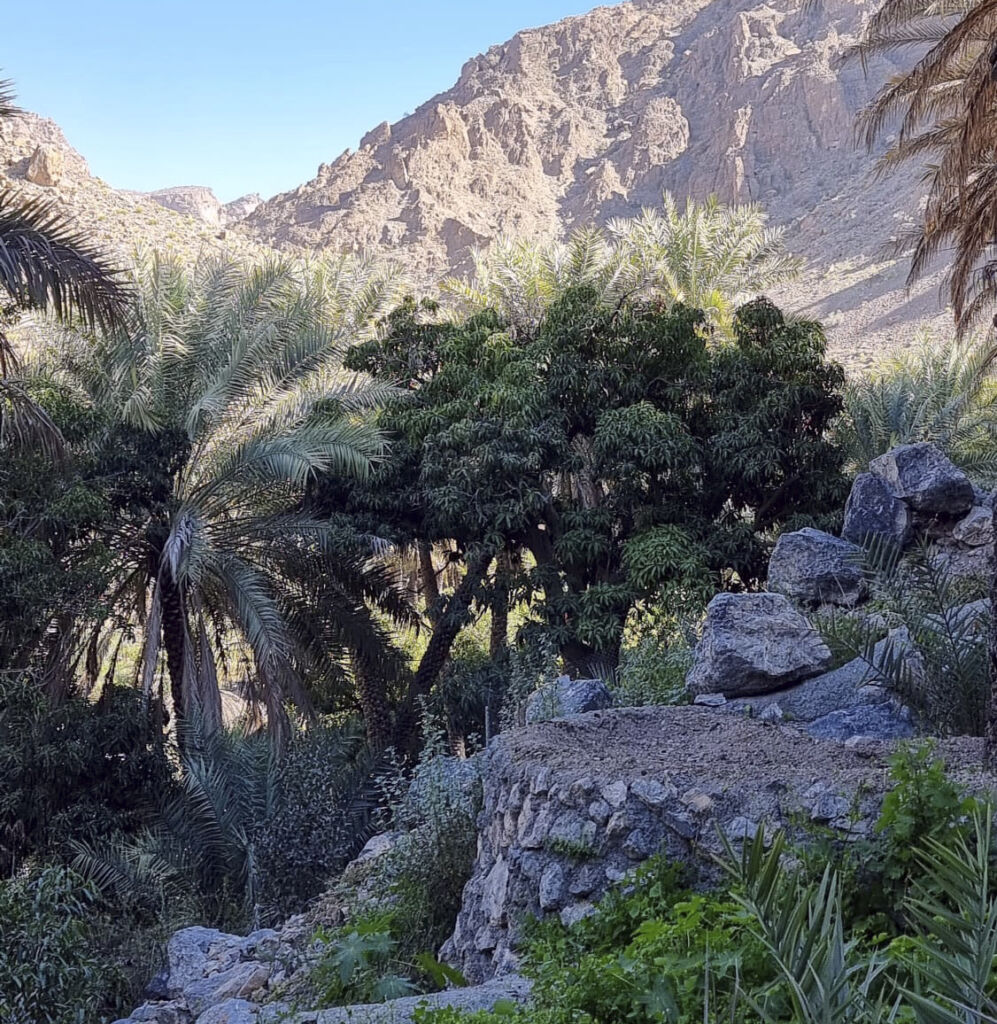
In Wadi Bani Kharus you can find many testimonies from the past: 600 million old stones, fossils from snails and clams and stone drawings from the pre-Islamic period. Particularly spectacular are the Wadi Bani Auf and the Snake Canyon, both for self-drivers and for hikers, adventurers and photographers. In order to do a day tour in the Snake Canyon (Wadi Bimmah), however, you should definitely hire a guide who, in addition to the necessary knowledge, also has the right equipment to survive the adventure well.
Wakaan Village is a village at 1400m altitude where modern development has not destroyed the charm of the place. Many types of fruit and vegetables are grown on the terraced fields.
Hotel in Al Batinah
Barceló Mussanah Resort 🌟🌟🌟🌟
Al Dakhiliyah
This region offers something for everyone: great mountain views, spectacular caves and some of the best forts and historical sites. Jebel Shams, over 3000m high, where you should walk the Balkony Walk along the Grand Canyon to enjoy a swim in a natural pool at the end; The green mountains of Jebel Akhdar with its old villages clinging to the mountain or terraced on steep slopes. Agriculture is practiced here thanks to the rainwater that is optimally distributed in the Aflaj system. In addition to fruit and vegetables, roses are also grown and rose water is distilled after the harvest. A four-wheel drive vehicle is mandatory to get here.
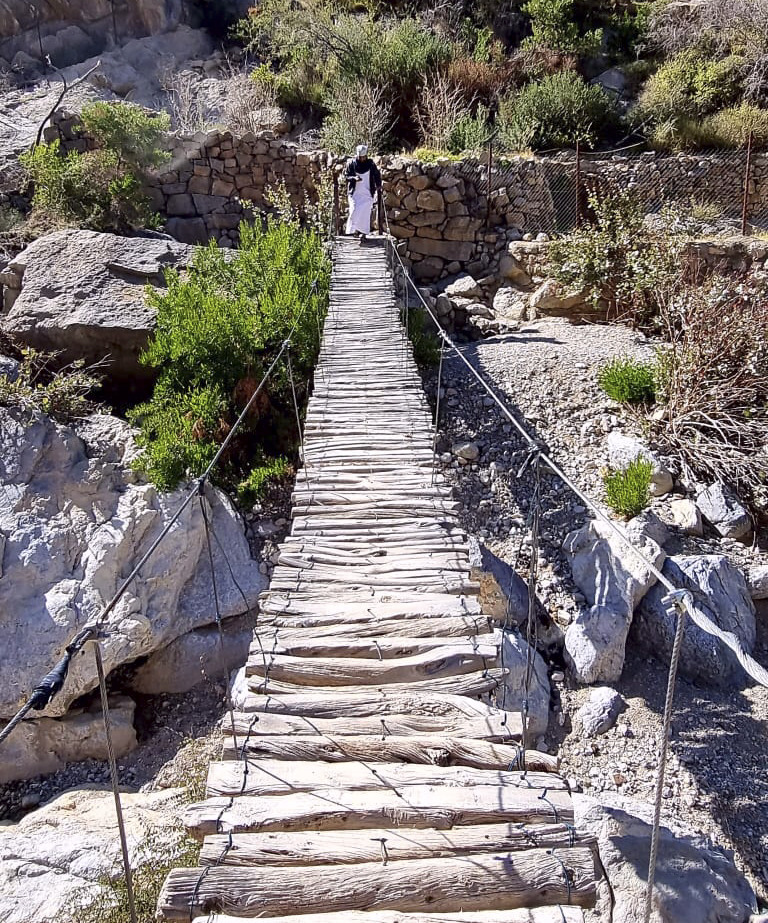
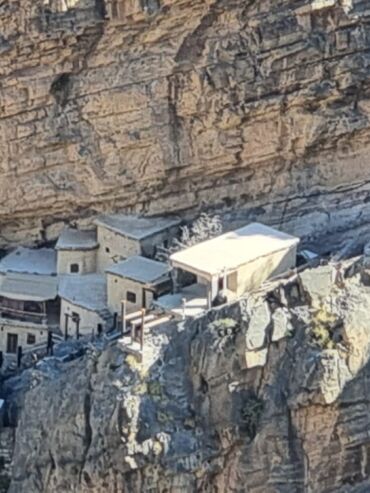
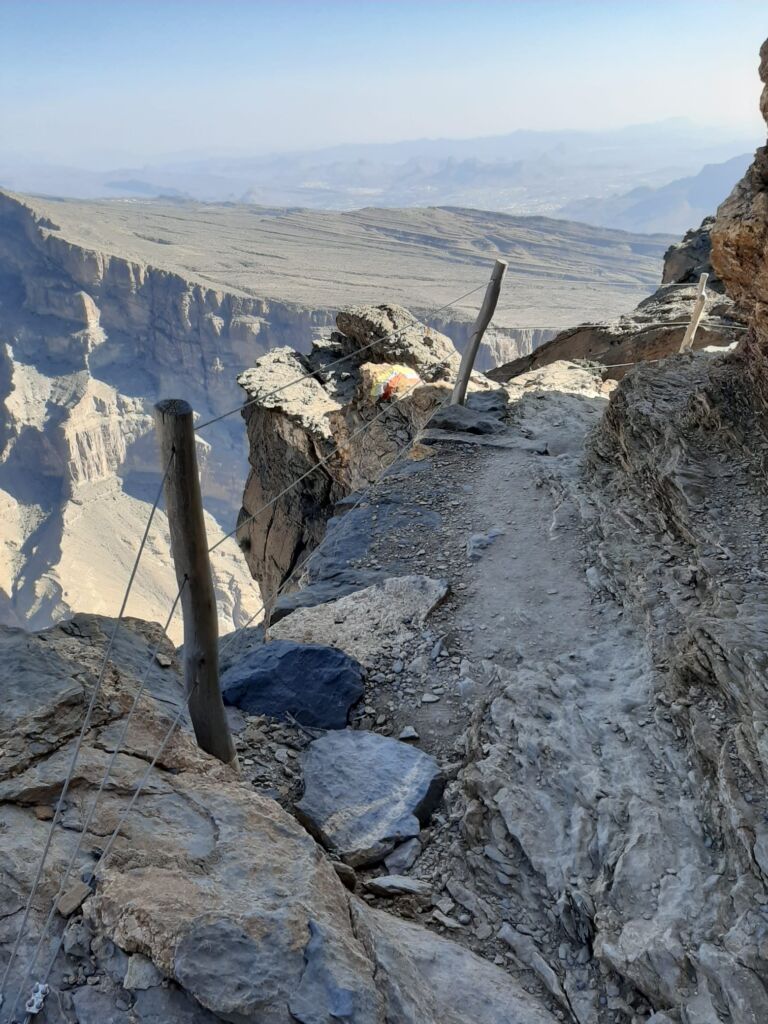
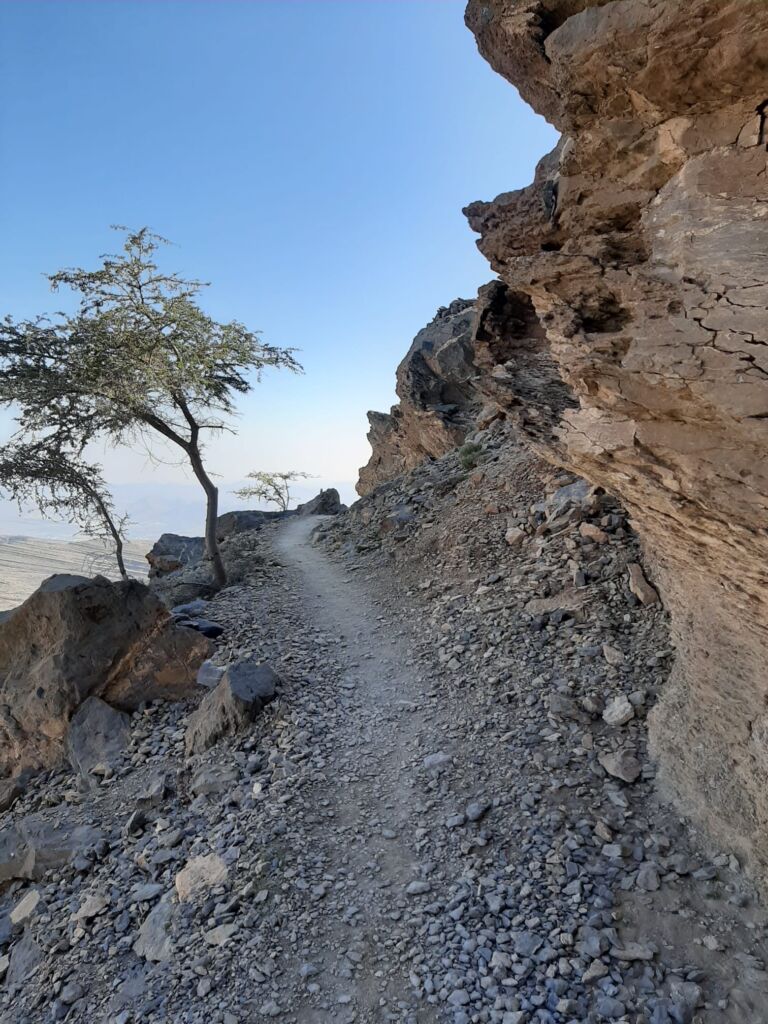
Nizwa is home to Oman’s most visited fort. A visit to the fort and castle is a must, but perhaps not at the most popular times. It is good to experience the sunset or the evening mood from here, when most of the other tourists have already left the place. It is also recommended to visit the outside of the castle to see an old fountain here, if you are lucky, even in operation. In the Nizwa Souq you will find everything your heart desires: all sorts of vegetables, fruit, spices, dried fruit, many kinds of dates, tahini, meat, fish, handicrafts…… On Friday mornings at 6am the Omanis meet, buy and sell goats, sheep and cattle. It is important not to arrive late in order not to meet too many tourists. The spectacle is often over by 9 a.m.

In Oman, especially in Muscat, there are several museums that tell the history of the country. Particularly exciting, especially for children, interactive and handicapped accessible is the museum Oman Across Ages near Nizwa, which opened in March 2023. Very worthwhile!
Falaj Daris is one of the wadis included by UNESCO in its list of World Heritage sites. This is where the water in Nizwa has been distributed for hundreds of years. The surrounding park is a popular spot for locals to spend the evenings or weekends
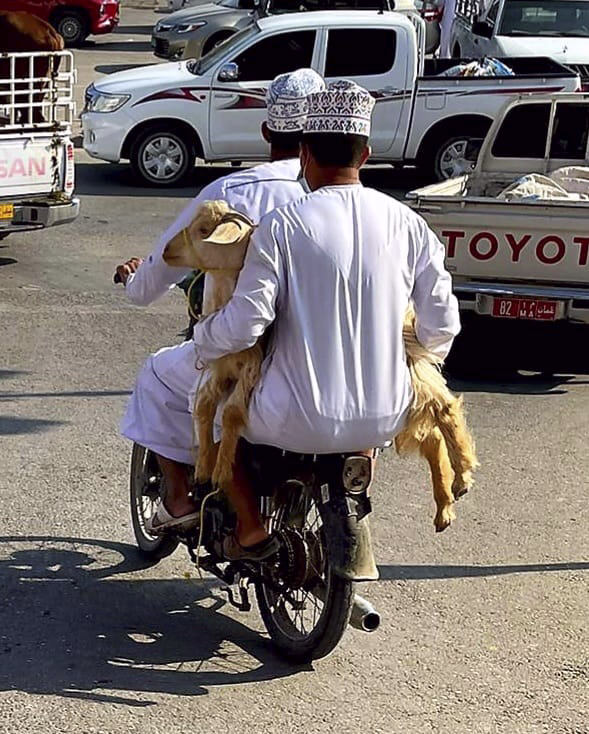
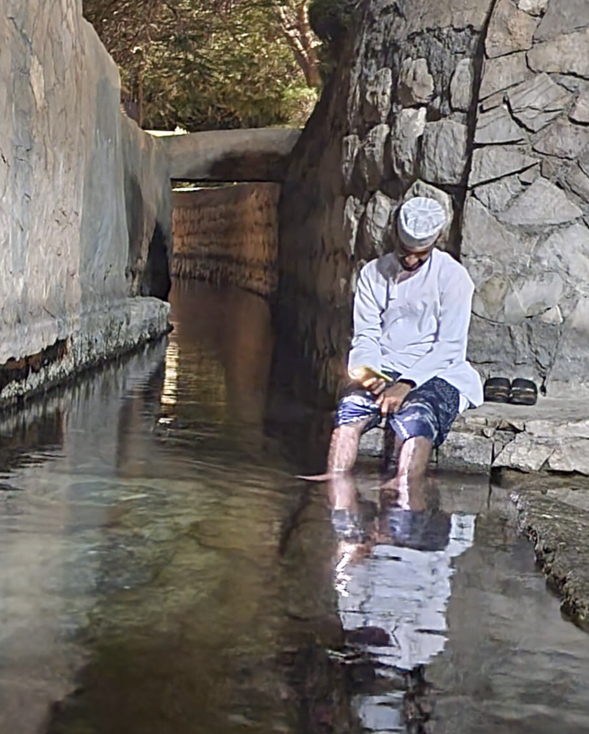
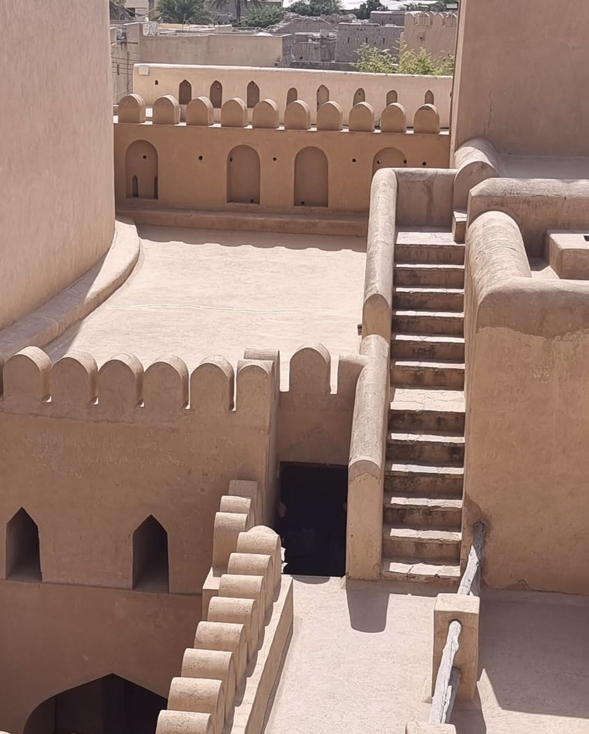
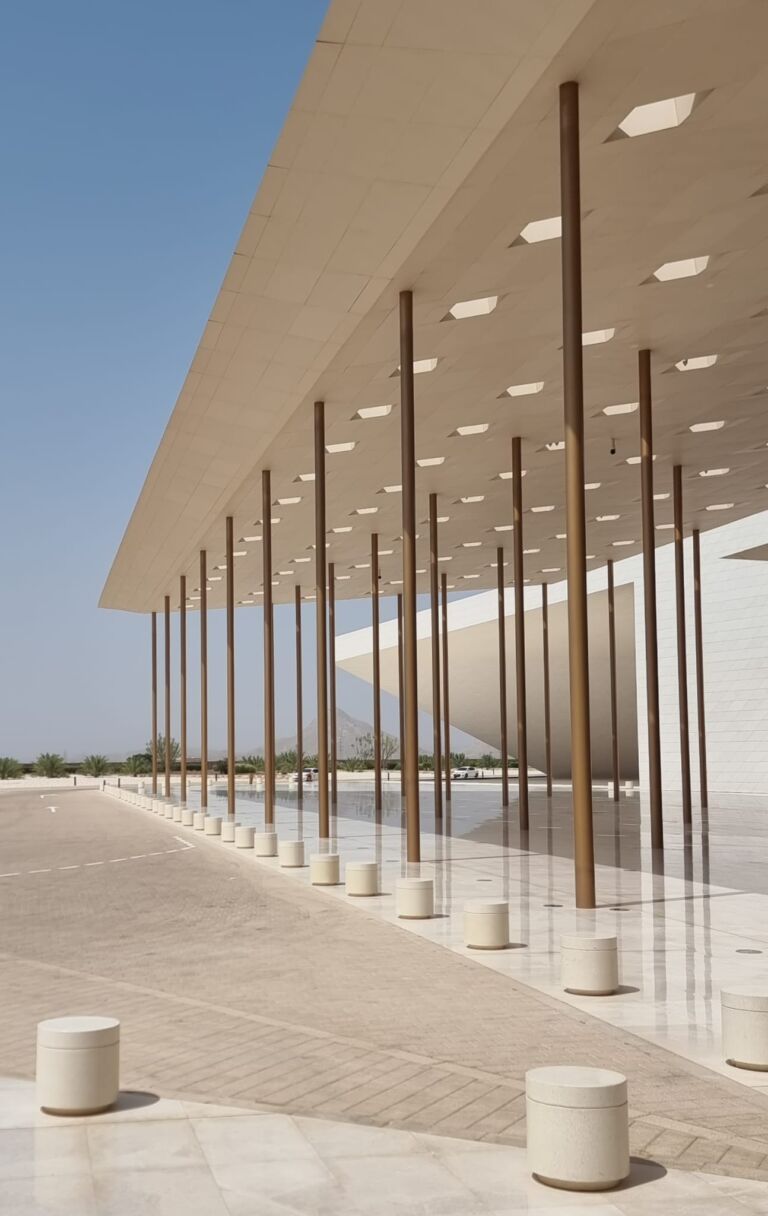
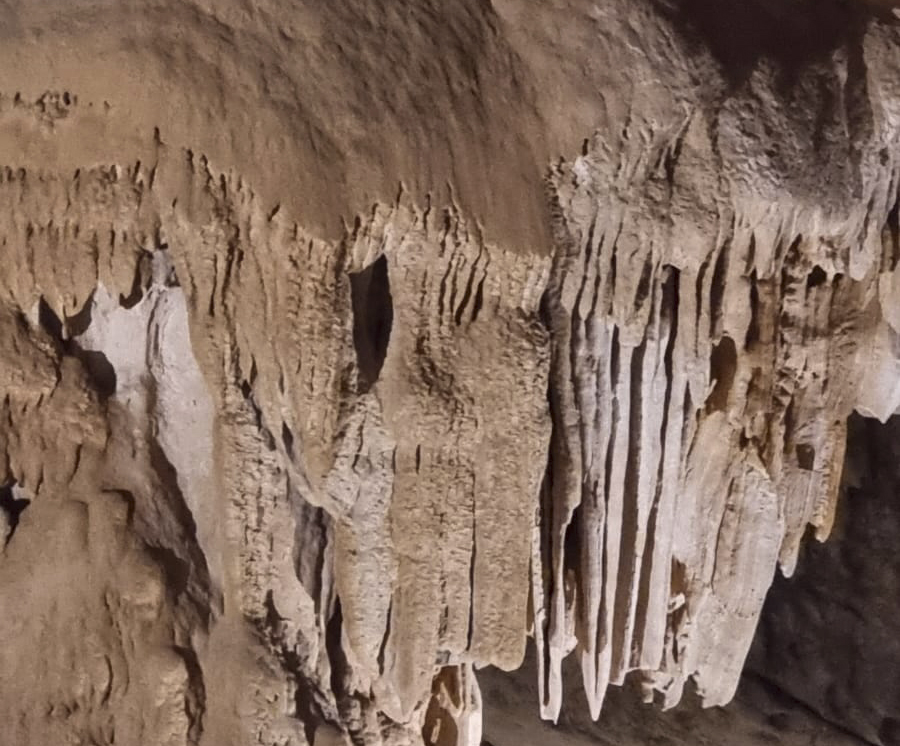
Al Hoota Cave is a more than 2 million-year-old cave, 4.5 km long with 4 lakes, where animals adapted to cave life live. As a visitor, you can go about 500m into the cave and admire the stalactites on a well-developed path.
Since March 2023, about 30 minutes south of Nizwa, in Manah there is the Museum of Oman across ages, a collection on the country’s history, housed in a spectacular building of modern architecture
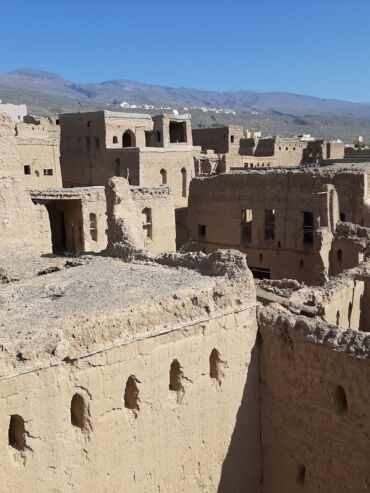
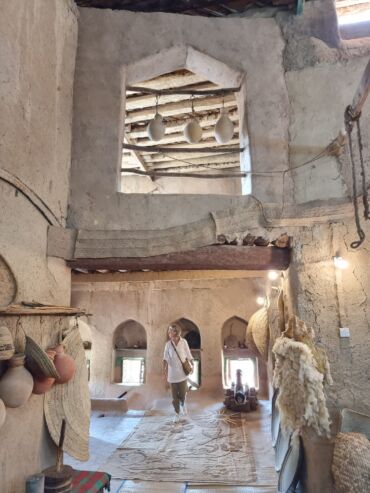
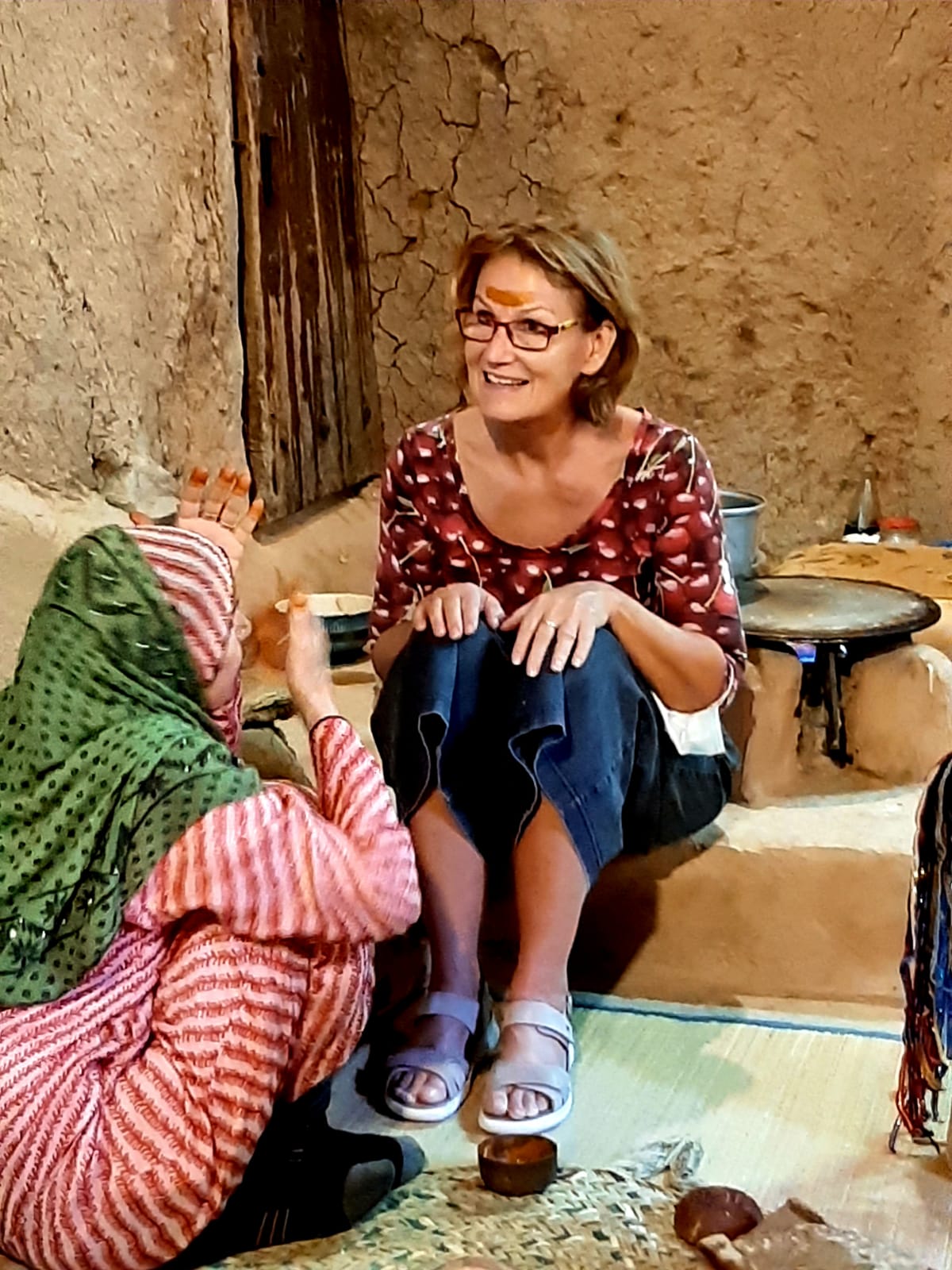
One of my favorite museums is the Bait Al Safah in Al Hamra. In the old part of the village with the ruins of old mud buildings is this small museum where you can experience how people lived here decades ago and what was part of their culture.
One of the most beautiful villages in the world according to UNESCO, Misfat Al Abriyyin is a village built on a hilltop surrounded by banana plantations and other crops. However, Misfat Al Abriyyin is no longer an insider tip. It is therefore worth choosing the time of your visit carefully. Weekends and lunchtimes are not recommended. An exciting route opens up for hikers, partly on the Falaj canals or along the slope. For those interested in archeology, it is recommended to visit Husn Salut. This is the ruins of a fort dating from 1300BC to 300BC.
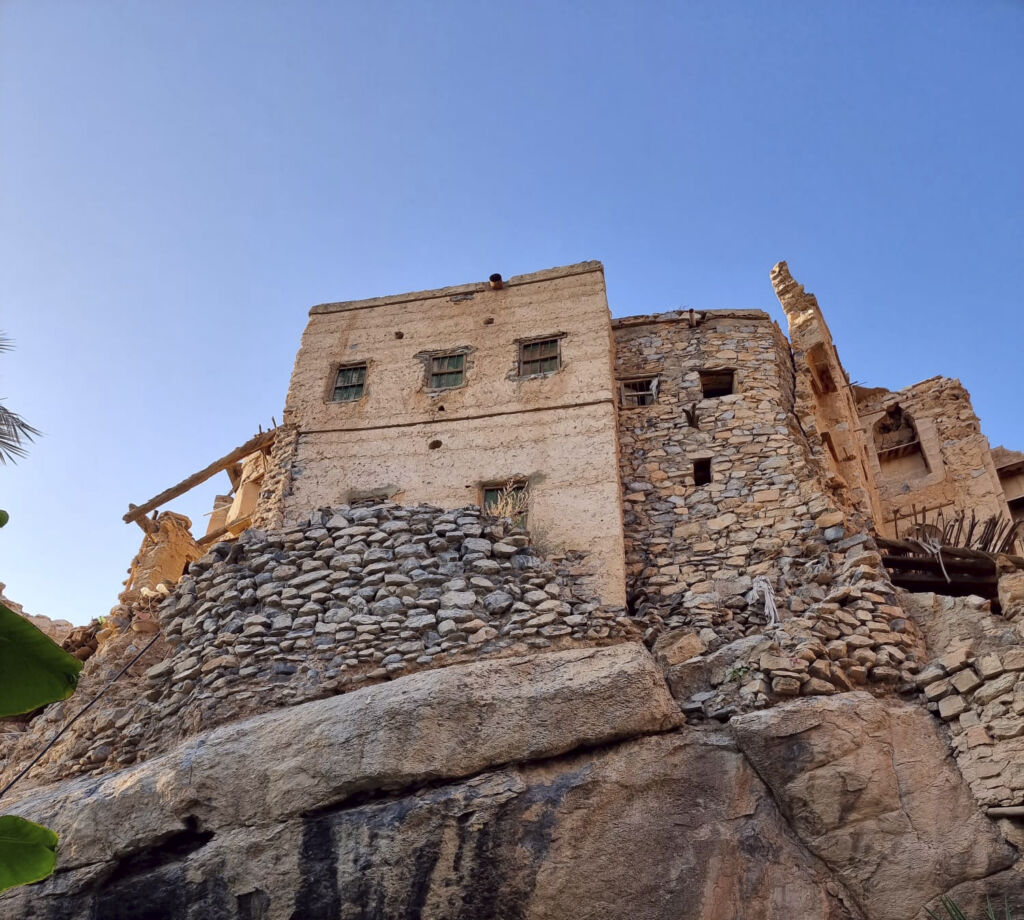
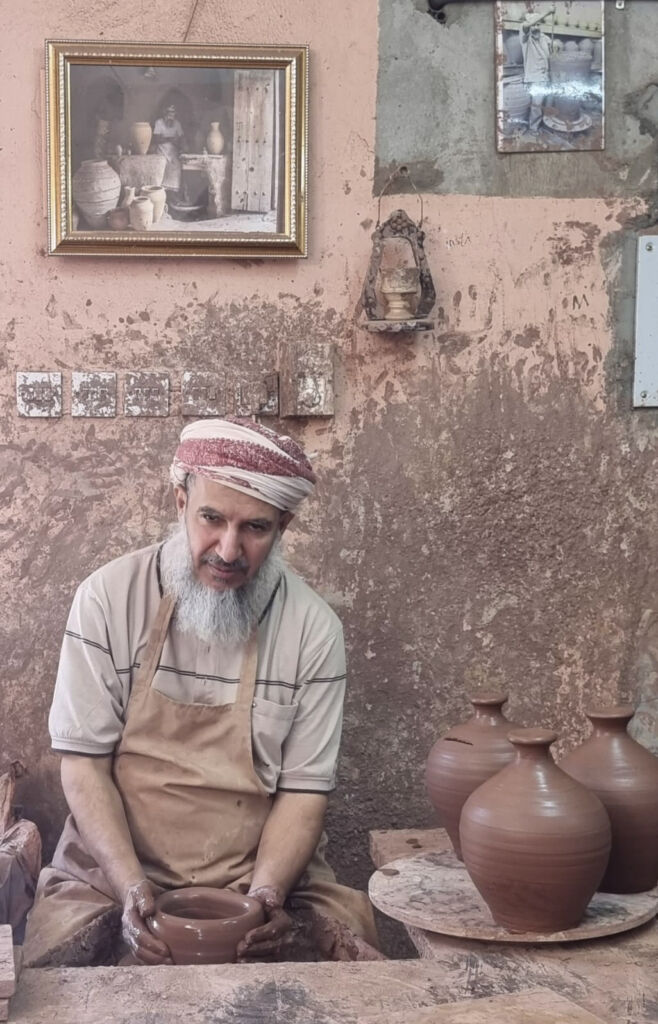
In addition to the fort, which is considered a UNESCO Heritage Site, Bahla also has an impressive city wall around which many legends are entwined. In addition, Bahla is known for the pottery art of the residents. They like to be looked over their shoulders at work. One of Oman’s most beautiful castles is Jabreen Castle, which was built around 300 years ago by an Imam with a great sense of beautiful coasts, which can still be seen today in the richly decorated interior.
Hotels in Dakhiliya
- Alila Jebel Akhdar
- Sama Hights Resort, Jebel Shams
- Jebel Shams Resort, Jebel Shams
- The Suwgra Guesthouse, Jebel Akhdaar
- Antique Inn, Nizza
- Nima Guesthouse , Nizwa
- Falaj Daris Hotel, Nizwa
- Old Guesthouse, Misfat Al Abriyyin
- Harit Al Misfah Inn, Misfat Al Abriyyin
Al Sharqiya
There is a bit of everything in the Al Sharquiya region. Especially the desert, formerly known as the Wahiba Sands after the Bedouin tribe of the Wahibi, with its north-south long chains of dunes and the valleys in between.
In Hawiyat najm Park is the Bimmah Sinkhole, a large crater formed by erosion in the rock
that now features a large pool that can be descended down a long concrete staircase. The
most impressive thing is the color of the water. At the entrance to the park there is a wellkept building with toilets and changing facilities.
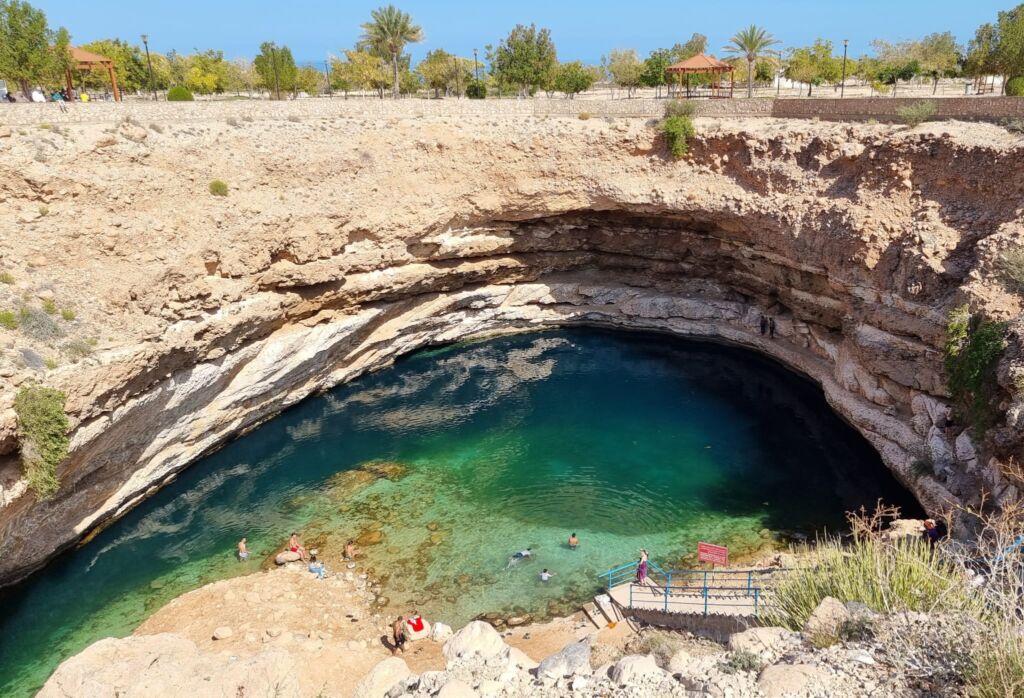
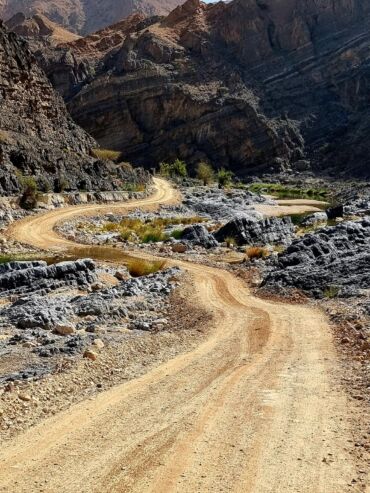
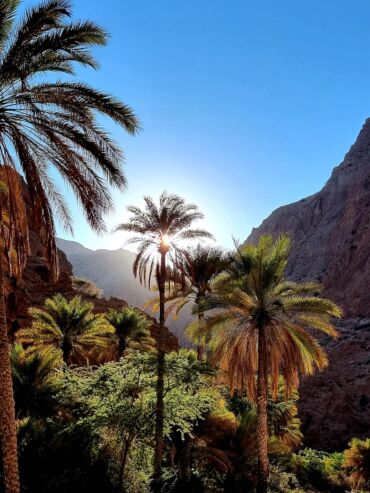
To drive Wadi Al Arbiyeen a 4×4 is recommended. The road is paved in places, but sometimes crosses the river. You should avoid visiting here when rain is forecast, because the water can rise very quickly and the road is then closed for safety reasons. Then no one can get in or out. To hike and visit a wadi without meeting many tourists this wadi is really recommended. I love to spend a night here in a quiet resort with a small lake in front.
Wadi Shab is probably the most visited wadi. So you should choose the time of your visit wisely. The tour begins with a short boat ride to the other shore. Then a walk begins, which can degenerate into climbing and balancing on the last third. After about 50 minutes you reach a pool. It is advisable to wear water shoes for swimming, especially if you want to go through the chain of pools to the cave where there is a waterfall. The most exciting is access to the cave through a narrow opening. Depending on the water level, it may be necessary to dive into the cave. To do this excursion you should be able to swim safely or rent a life jacket.
Wadi Tiwi is right next to Wadi Shab. There is water all year round here too. However, you can drive in by car. You have to reckon with very narrow places on the later unpaved road – not for the faint of heart. Here the villages lie like a string of pearls with many farms for growing fruit and vegetables in between. At the end of Wadi Tiwi is Wadi Mibam with a beautiful pool that invites you to swim.
Sur is the shipbuilding capital. For generations, the wooden dhows used to trade the Indian Ocean have been built here. Today these boats are mainly used for tourist purposes, not only
in Oman. In the shipyard you can sometimes go to the current construction site and see how artfully these ships are being built. Not far from the shipyard is the Boat Building Museum
with an exhibition of various types of boats. It is also worth driving or walking across the bridge to enjoy the view from the lighthouse on the other side of the lagoon. A walk east
from the lighthouse along the coast is also worthwhile to get an impression of the old buildings in the region and to see the fishing boats on the beach.
25 km north od Sur you pass the ruined tomb of Bibi Miriam. It is about all that remains of the 2nd-century settlement of Qalhat, one of the most ancient sites in Oman. There’s not much left to see, but if you pay the site a visit, you’ll be in excellent company: both Marco Polo in the 13th century and Ibn Battuta in the 14th century stopped here on their travels. A site restoration began in 2014 and is ongoing. Until it’s complete, you can spot the tomb from the highway.
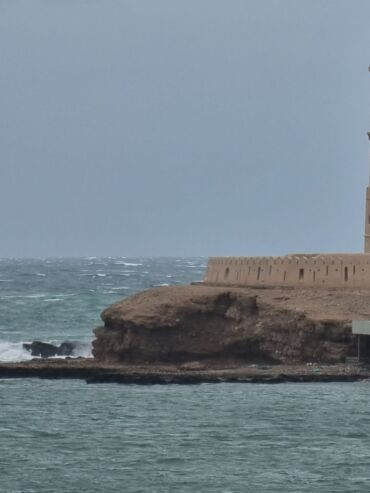
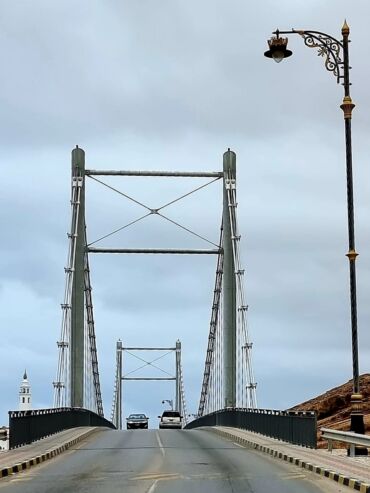
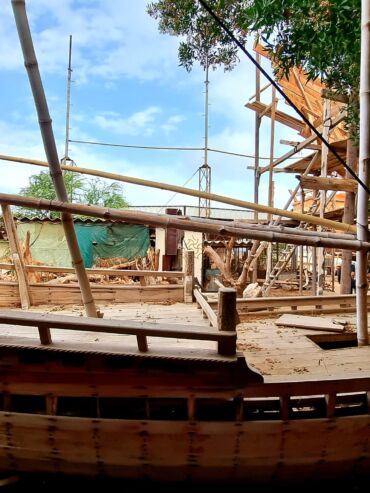
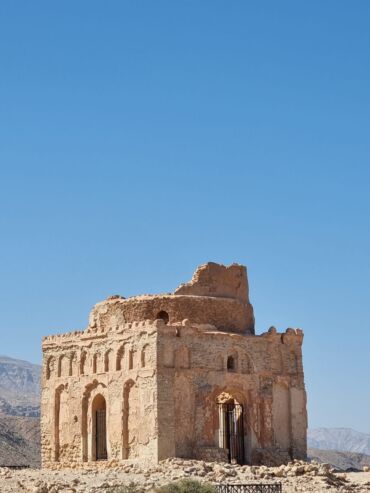
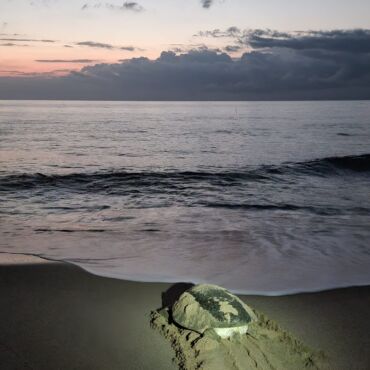
In Ras al Hadd and the surrounding area, there are beaches that are particularly popular with turtles to lay their eggs. The main season for this is June to September. Turtle Beach Reserve Ras Al Jinz offers night and morning walks to the beach all year round to see baby turtles hatching or large turtles laying eggs. An unforgettable experience!
On the way from Sur to the desert you pass the Wadi Bani Khalid, a wadi that you can drive quite close to by car, that has a small restaurant and in the back also invites you to swim. Swimming shoes should also be worn here for easier access to the water. A small cave about 1 km away you have to crawl to open up. A guide is recommended.
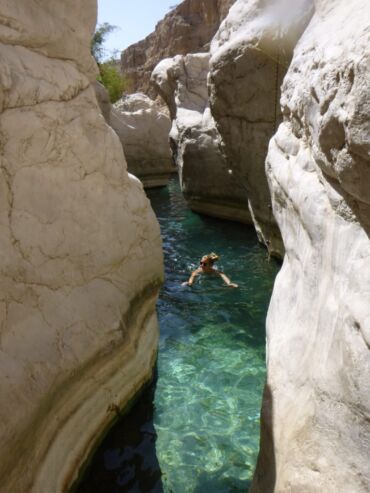
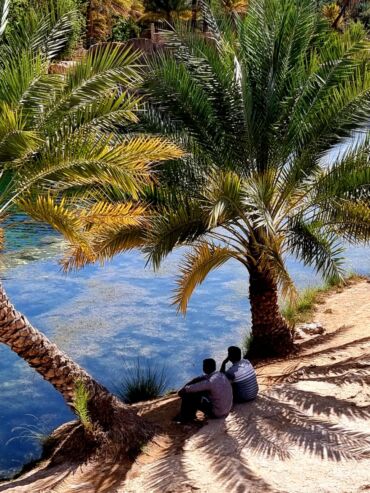
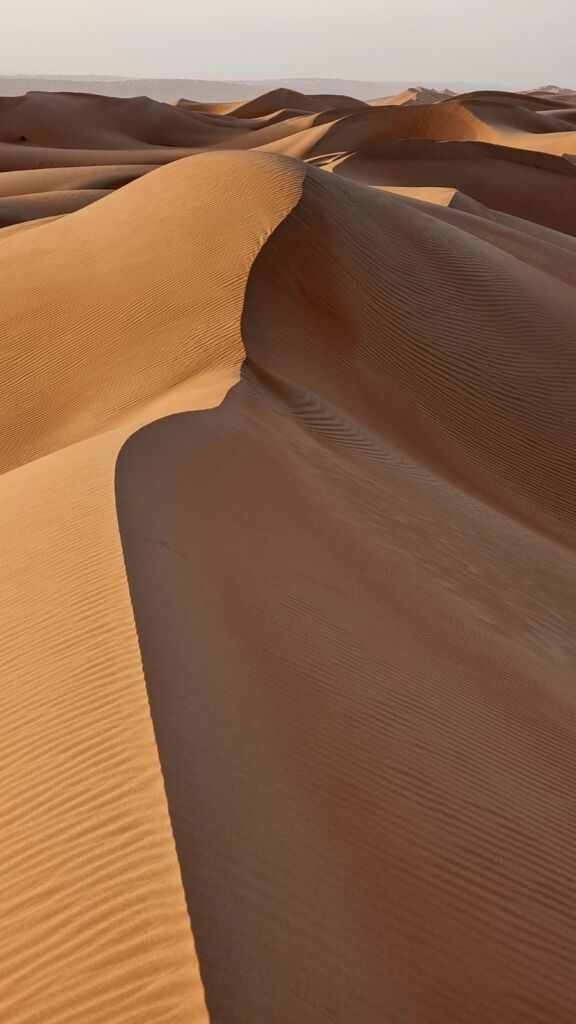
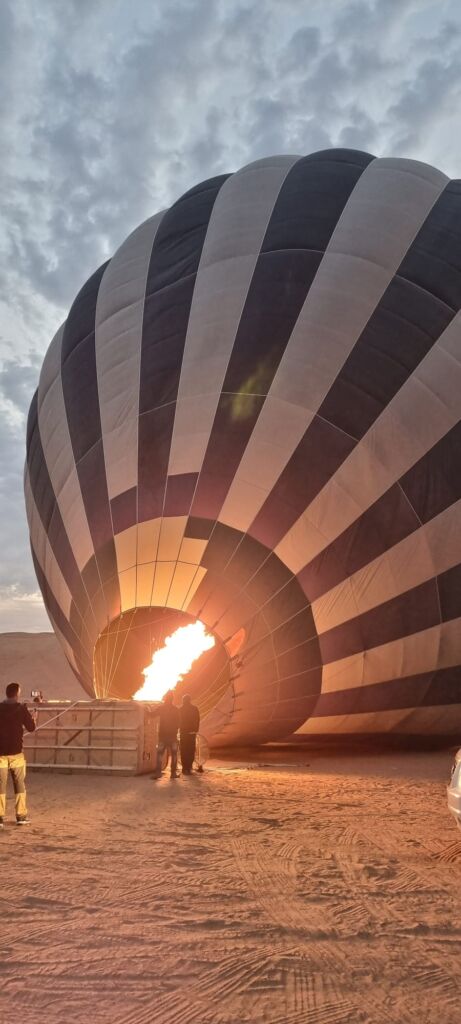
Wahiba Sands or Al Sharqiya Sands can be accessed from several locations. Several slopes lead in from the villages of Al Bidiyya and Al Wasil. However, you should not attempt this without a 4×4. If you don’t have the right motor yourself, there are shuttles that drive guests to the camps. Even with a 4×4 driving on the dunes is not recommended for dune inexperienced drivers.
A very special attraction: the hot air balloon ride over the dunes in Wahiba Sands. Early in the morning you meet at the starting point, drink a coffee and follow the exciting preparation of the balloon. Then you start the ride and see the world from above while the sun rises.
From some camps the transfer to the balloon is included in the price. For other camps the transfer can be booked for an extra charge.
In addition, depending on the camp, there are many options to spend your time in the desert: A ride on camel or horse for sunset, dunebashing, sandboarding, star gazing, campfire, quad biking…
Not everything is offered everywhere. Some things have to be booked in advance, others can be done spontaneously. With pleasure I advise you with your planning
Between the dunes you will find many camps of different standards , from traditional Bedouin style to luxury glamping.
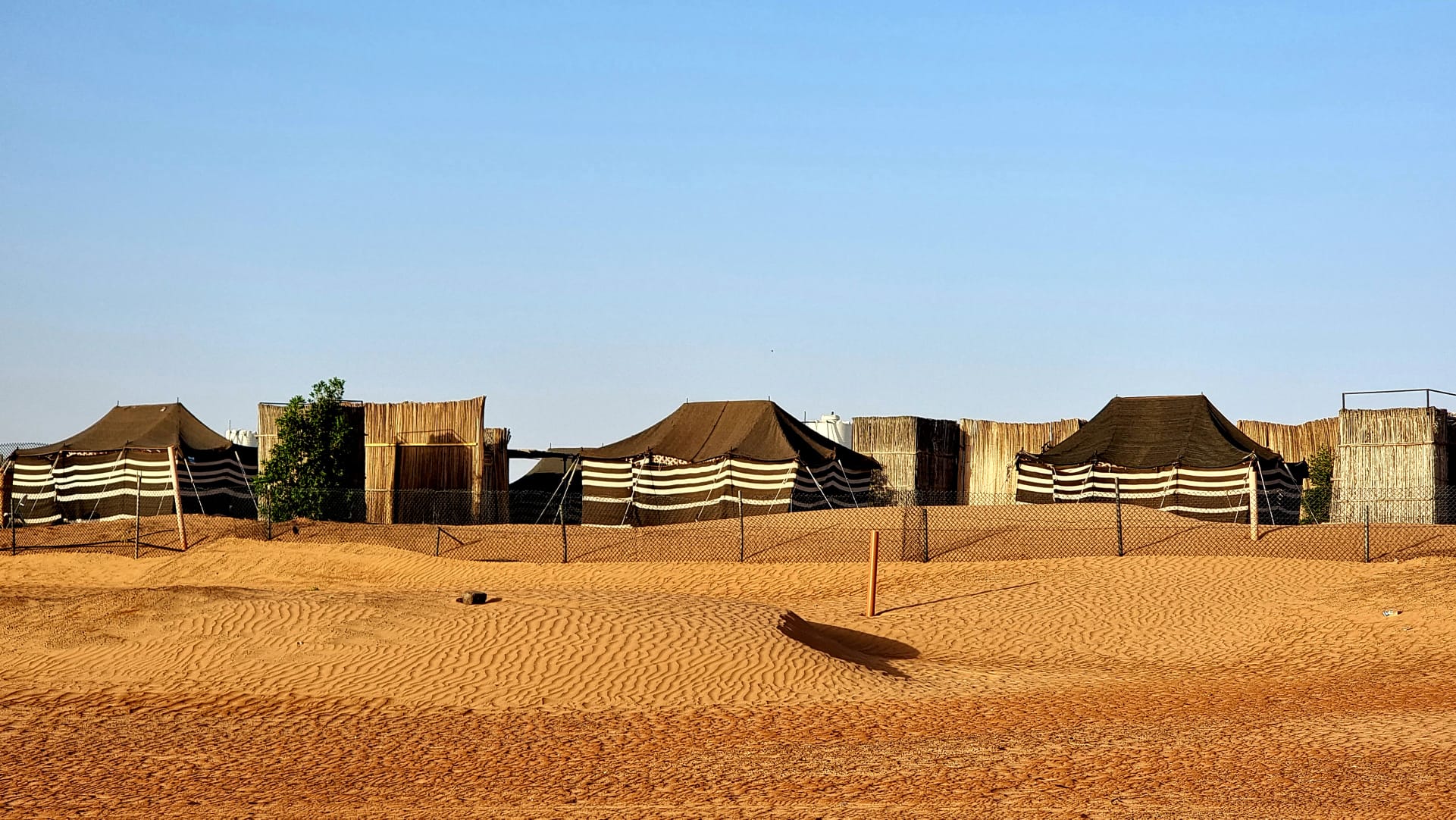
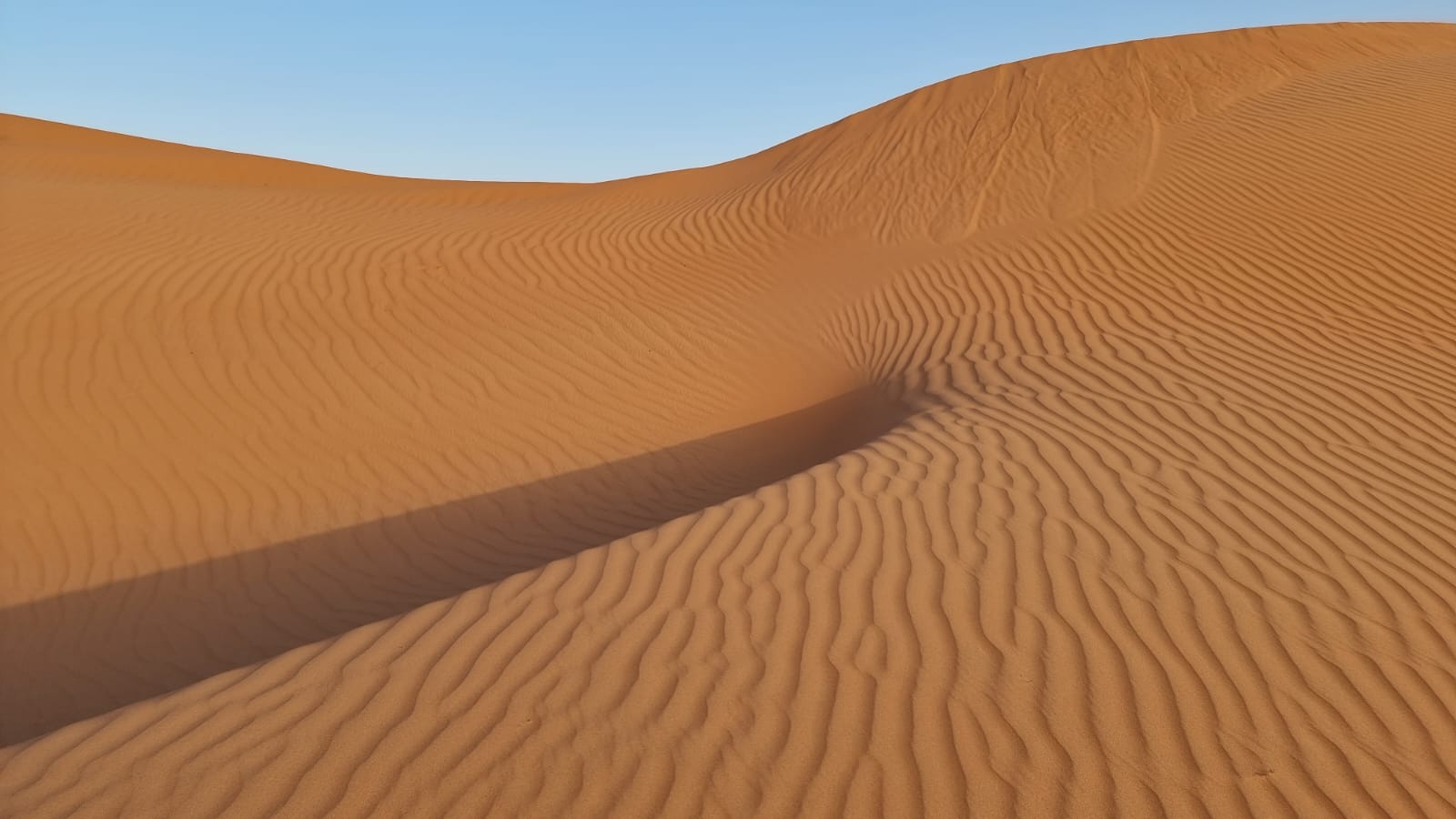
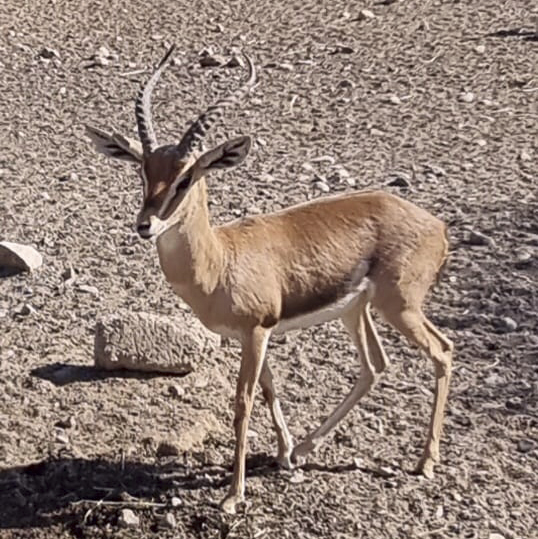
In the Wilayat Al Kamil Wa Al Wafi is the Al Saleel Wildlife Reserve with a variety of animals: Arabian gazelle, eagle, vulture, wild cat… In a biological station you can see an exhibition about it and maybe even gazelles up close consider that are kept here for breeding purposes for release into the wild. This is also a very interesting facility for children.
Masirah Island also belongs to this region. This largest Omani island is located off Shanna, from where it can be reached by ferry. Recently, there are also flights from Muscat directly to Masirah Island. Especially surfers and kitesurfers come to this little developed island and enjoy the perfect conditions. Masirah Island is also a hotspot for migratory birds. Birdwatchers meet here from September to the end of February and are thrilled by the diversity of species.
For surfers and kitesurfers Masirah Island is a paradise. The winds are favorable all year round. Beginners and professionals get their money’s worth.
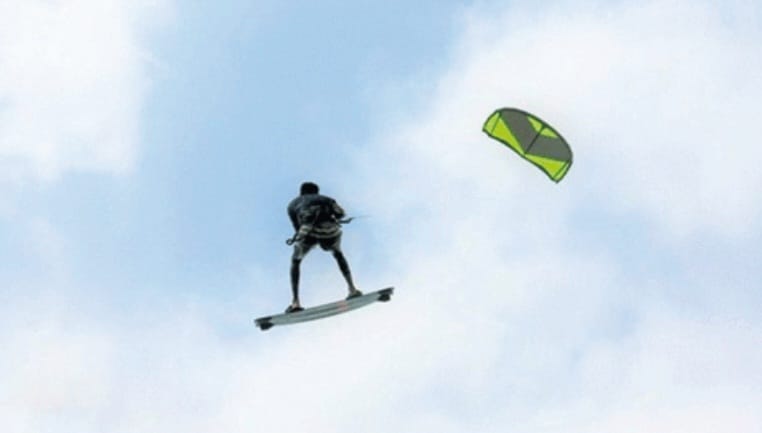
Hotels in Al Sharqiya
- Wadi Al Arbeieen Resort,
- Wahiba Bedouin Rustic Camp, Desert
- Desert Nights Camp, Desert
- Turtle Beach Resort, Ras Al Hadd
- Sama Ras Al Jinz Resort, Ras Al Jinz
- Turtle Beach Reserve, Ras Al Jinz
- Al Asala Resort🌟🌟🌟, Al Khabbah
Al Dhahirah
Al Dhahirah governorate in northwestern Oman, at the foot of the Western Hajar Mountains, is a very sparsely populated area. Here UNESCO has added Bat, Al Khutum and Al Ayn to the World Heritage Site list. 3000 B.C. there were settlements and necropolises
whose traces can still be seen today. The tombs at Bat are referred to as beehive tombs. Ibri is one of the oldest inhabited cities in Oman. Ibri Fort is home to one of the largest mosques in a fort.
Al Buraymi
Al Buraymi is right on the trade route between Oman, Saudi Arabia, Abu Dhabi, on the UAE border. Agriculture is mainly driven here, lemons, alfalfa and date cultivation are the main focus. One can visit Al Hilah Castle and enjoy the views of the area from the roof, or the smaller Al Khandaq Castle from the early 19th century. Here, too, the Falaj system plays a major role in agricultural yields. The Falaj Al Sarani runs underground from the mountains in the east to the middle of Al Buraymi. Visitors can visit this local restored falaj 10m underground and see the engineering skills of generations past.
Al Wusta
Al Wusta is the most sparsely populated governorate of Oman. Its capital is Hayma on the border of the barren desert landscape. This is in stark contrast to the landscape to the east, the large bays and steep shores, teeming with birds and sea creatures, where it is
commonplace to encounter whales, turtles and dolphins in the Arabian Sea. Today Duqm is a rapidly developing industrial center. A visit to the Rock Garden is close by. Thousands of rocks, limestone and sandstone, formed by nature over thousands of years,
are spread over an area of 3 square kilometers, often in bizarre shapes The Al Wusta Wildlife Reserve is an area where the white oryx gazelles are kept protected. You probably won’t see the animals in the wild, but mothers and their young are housed in a marked-off area before they are released back into the wild. Duqm coast is famous for its beautiful beaches. It’s worth visiting Barr Al Hikman, an important breeding ground for migratory birds including flamingos, cormorants, pelicans and herons. Here it is highly recommended to drive through the dunes in a convoy or with an experienced guide. Also Al Khaluf beach with its white dunes or further south the 5 km long Ras Markaz beach and Ras Madrakah with its black rocks are attractive places. Please make sure not to leave any rubbish behind and protect nature. Thanks!
Hotels in Duqm
- Crowne Plaza Duqm🌟🌟🌟🌟🌟
- Park Inn Duqm🌟🌟🌟🌟

